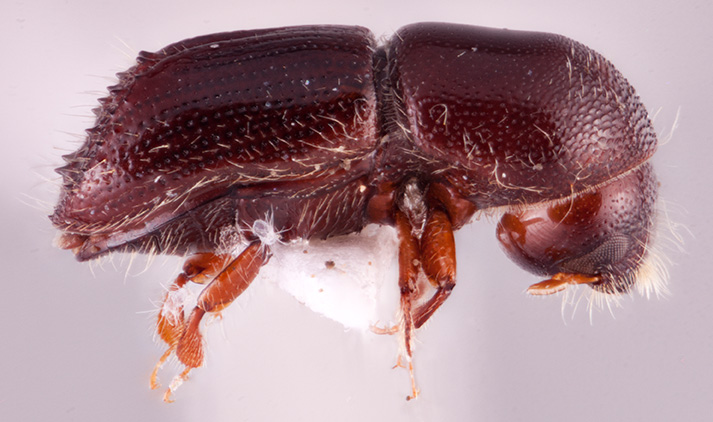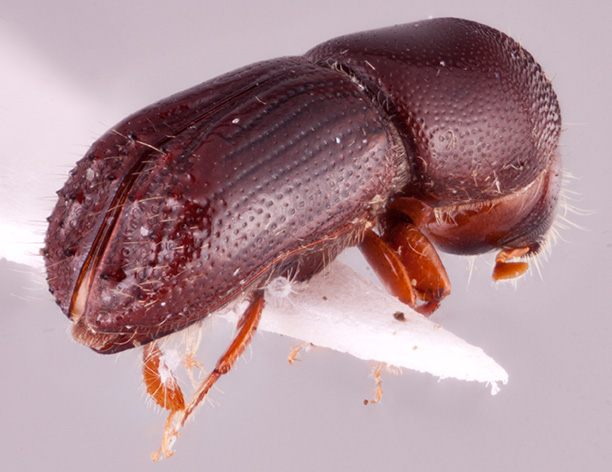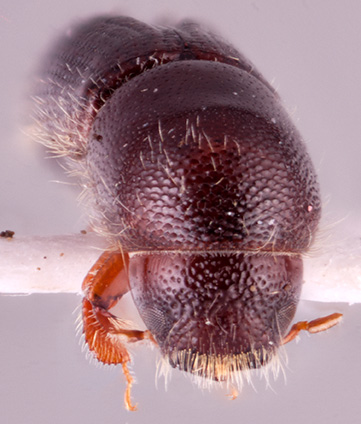Stictodex
|
Stictodex dimidiatus; R.K. Osborn |
|
Stictodex dimidiatus; R.K. Osborn |
|
Stictodex dimidiatus; R.K. Osborn |
|
Stictodex dimidiatus; R.K. Osborn |
Taxonomy
Stictodex Hulcr and Cognato, 2013: 123.
Diagnosis
Moderately sized, 2.4−3.3 mm long, elongate, 2.54−2.89 times as long as wide, and shiningshining:
appearing glossy or bright in luster; referring to a surface that is polished and reflects light well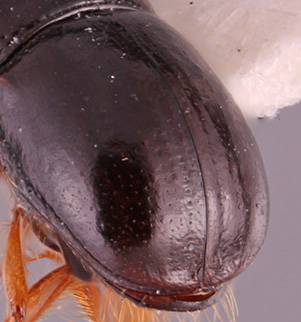 species. Stictodex can be distinguished by the antennalantennal:
species. Stictodex can be distinguished by the antennalantennal:
pertaining to the antennae
club very broad, type 2 (obliquely truncatetruncate:
appearing cut off or suddenly shortened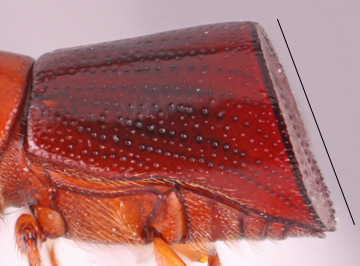 ), with segment 1 straight, elytralelytral:
), with segment 1 straight, elytralelytral:
pertaining to the elytra
declivitydeclivity:
downward slope of either the pronotum or elytra
 with first and second interstriaeinterstria:
with first and second interstriaeinterstria:
longitudinal spaces along the elytra between the striae, which is not as<br />
impressed and bear smaller punctures.
 divergent, broadest at elytralelytral:
divergent, broadest at elytralelytral:
pertaining to the elytra
summit, declivitydeclivity:
downward slope of either the pronotum or elytra
 flat and gradually sloped, scutellumscutellum:
flat and gradually sloped, scutellumscutellum:
a shield-like sclerotized plate located at the midpoint of the elytral base
flat, flush with elytra; protibiaeprotibia:
tibia of the first pair of legs
inflatedinflated:
blown up; distended
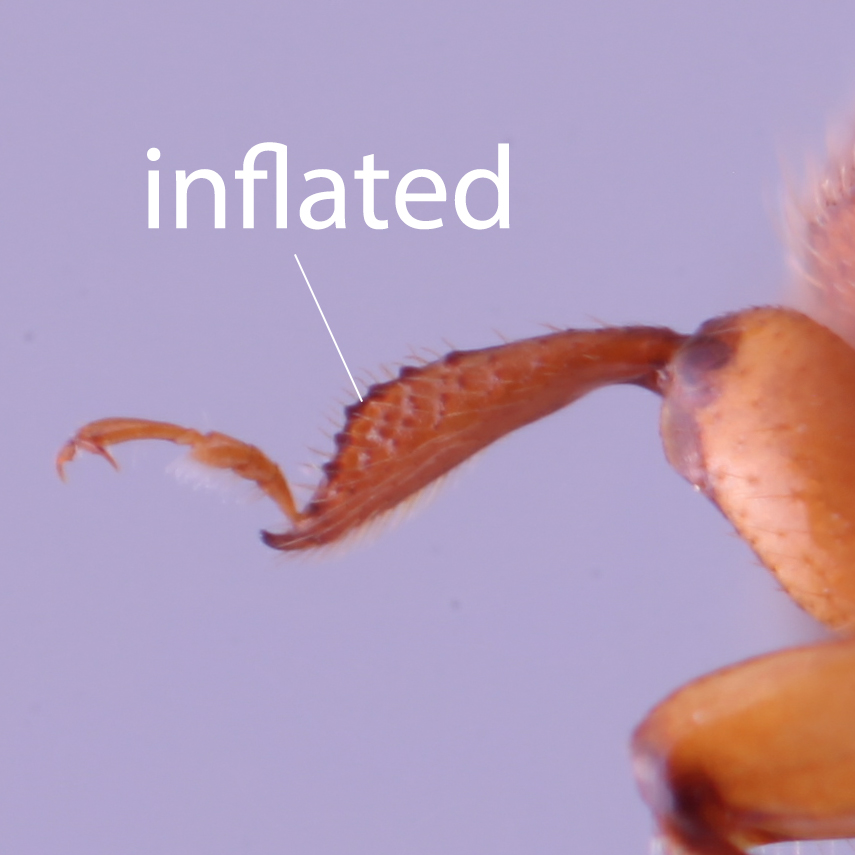 on posteriorposterior:
on posteriorposterior:
toward the rear end; opposite of anterior
 face and procoxae contiguous. Stictodex is similar to Arixyleborus with which it shares a broad antennalantennal:
face and procoxae contiguous. Stictodex is similar to Arixyleborus with which it shares a broad antennalantennal:
pertaining to the antennae
club but it lacks the distinctive elytralelytral:
pertaining to the elytra
ridges and furrows.
May be confused with
Arixyleborus, Fraudatrix, and Xyleborus
Distribution
Paleotropical
Gallery system
not described

